THE PROSTATE BETWEEN CURIOSITY AND HISTORY
(freely taken from “A prostate in history” by A.Venturini)
EXCURSUS STORICO
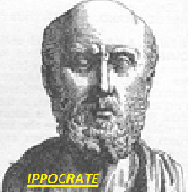
Despite the fundamental importance of this gland in the physiology of reproduction and in the pathology of urination, until the sixteenth century, its existence was practically not known or little importance was given to it.
Hippocrates guessed that a stenosis of the bladder neck was the basis of urination disorders, but he completely ignored the prostate.
Even in Egyptian medicine there are only references to the gland and no therapy for urinary retention.
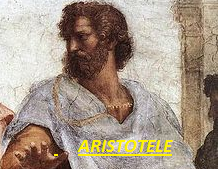
Herophilus in 300 BC he gave a rough anatomical description of the gland, however referring to his studies on monkey cadavers, which are different from humans (bifid prostate).
When Aristotle talks to us about varicose prostate, he is actually referring to the seminal vesicles, proving that he ignores the real anatomy.
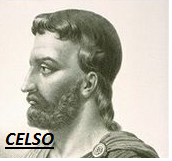
Aulus Cornelius Celsus (25BC-50AD), famous Roman doctor, in his "de medicina" studied bladder stones in depth, which he erroneously believed to be the cause of urinary retention, without however making any mention of the prostate and its hypertrophy.
Galen (129-216 AD) is probably the ancient author who came closer than any other to the anatomical reality of this organ. In fact, he uses the term parastatae to indicate the epididymis and prostatei to indicate the set of prostate and seminal vesicles. Furthermore, speaking of the obstruction of the urethra, he ascribes the cause to a swelling that blocks the outflow of urine, but he suspects that it is the urethral canal itself which, by swelling, causes this swelling.
Not even Leonardo da Vinci in his famous anatomy tables seems to deal with the prostate which he does not recognize in his dissections.
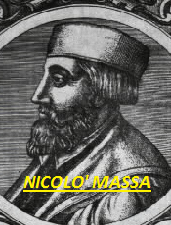
Finally, the great Venetian doctor Nicolò Massa (1485-1569) was the first to describe the prostate as a specific anatomical individuality and since then the term has found its rightful place in medical dictionaries.
But the first to begin treating the prostate as a cause of urinary obstruction was the great French physician and anatomist Jean Riolano (1580-1657), court doctor of Henry IV, Louis XIII and Marie de Medici.
Following in his footsteps, both the Dutch anatomist Thomas Bartholin (1616-1680) and the Italian Gian Domenico Santorini (1681-1737) clearly spoke of the prostate as a gland in its own right. The Dutch described it as a formation similar to two testicles which the introduction of a probe dilated and which then narrowed after retraction.
Santorini would later describe it, in a much more modern way, as a body which, protruding into the bladder, obstructs the neck.
Having reached the 18th century, observations on prostatic hypertrophy intensified and anatomical studies on the corpse confirmed the previous hypotheses.
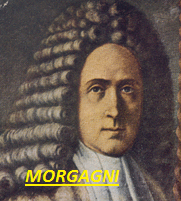
Gianbattista Morgagni (1682-1771), in one of his famous anatomical treatises published in Venice in 1761, specifically talks about "swelling of the prostate" especially in elderly subjects, and the obstacle to urinary outflow associated with it.
But at this point we had entered the 19th century and while everyone agreed on the existence of prostatic hypertrophy as a cause of urinary retention, surgical instruments began to be refined to try to remove the hypertrophy itself.
The last decisive step forward in the knowledge of the organ is thanks to the Nobel Prize winner Charles Huggins who in 1944 managed to demonstrate the relationship between prostate growth and testosterone.
TREATMENTS OF THE URINARIA RETENTION
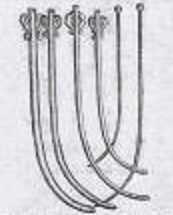 Although, as we have seen, it took thousands of years to get to understand the anatomy of the prostate and the pathogenesis of urinary obstruction, ancient documents show instead that from the Mesopotamian era (3000 BC) it was already clear that the introduction of a cannula into the urethra allowed, to those who were obstructed, to urinate. On a Babylonian tablet is written: “You will put in a remedy in the penis, with the help of a bronze tube.”
Although, as we have seen, it took thousands of years to get to understand the anatomy of the prostate and the pathogenesis of urinary obstruction, ancient documents show instead that from the Mesopotamian era (3000 BC) it was already clear that the introduction of a cannula into the urethra allowed, to those who were obstructed, to urinate. On a Babylonian tablet is written: “You will put in a remedy in the penis, with the help of a bronze tube.”
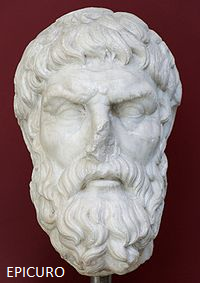 In the Ebers papyrus of 1565 BC, medical experiences dating back a thousand years earlier are reported, with the use of urethral probes. However, even though the therapeutic route seemed so clearly marked, for unknown reasons the use of the urethral probes fell totally into disuse. To demonstrate this, it is reported by Seneca that the famous Greek philosopher Epicurus (341a.C. 271a.C.) at the age of 72, he died by cutting his veins, after he had failed to urinate for 14 days.
In the Ebers papyrus of 1565 BC, medical experiences dating back a thousand years earlier are reported, with the use of urethral probes. However, even though the therapeutic route seemed so clearly marked, for unknown reasons the use of the urethral probes fell totally into disuse. To demonstrate this, it is reported by Seneca that the famous Greek philosopher Epicurus (341a.C. 271a.C.) at the age of 72, he died by cutting his veins, after he had failed to urinate for 14 days.
Erasistrato di Ceo (330-250a.C.), who in his writings already spoke of bladder catheterization with a double-curved silver probe, was one of the founders of the medical school of Alexandria of Egypt and court physician near Seleucus I, general of Alexander the Great.
Catheters of antiquity often had very sharp tips that caused severe pains and bleeding during the introduction. However, this type of tool brought the therapeutic method closer to the present day.
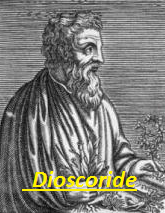 What about the method developed by the famous Greek doctor and botanist Dioscoride Pedanio (40-90d.C) who in the “De Materia Medica” recommends a method still in vogue to the times of the Sun King. This method consisted in introducing into live bedbug urethras, which with their movement triggered a violent pain that could momentarily relax the neck of the bladder and therefore allow urination. The concept was right and that’s what followed today (the relaxation of the bladder neck), when administering “alpha-blocking” drugs.
What about the method developed by the famous Greek doctor and botanist Dioscoride Pedanio (40-90d.C) who in the “De Materia Medica” recommends a method still in vogue to the times of the Sun King. This method consisted in introducing into live bedbug urethras, which with their movement triggered a violent pain that could momentarily relax the neck of the bladder and therefore allow urination. The concept was right and that’s what followed today (the relaxation of the bladder neck), when administering “alpha-blocking” drugs.
FAMOUS PROSTATES
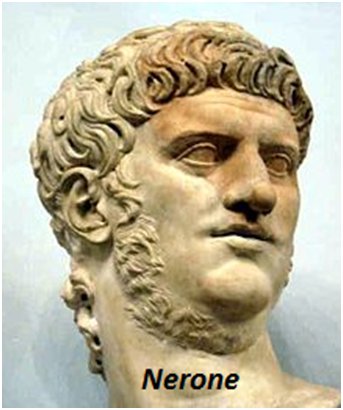 The emperor Nero suffered from prostatic hypertrophy with urinary retention and tied the base of the penis to his slaves, so that they went into retention. After a few days he then made them come before him and rejoiced in seeing them suffer from the inability to urinate.
The emperor Nero suffered from prostatic hypertrophy with urinary retention and tied the base of the penis to his slaves, so that they went into retention. After a few days he then made them come before him and rejoiced in seeing them suffer from the inability to urinate.
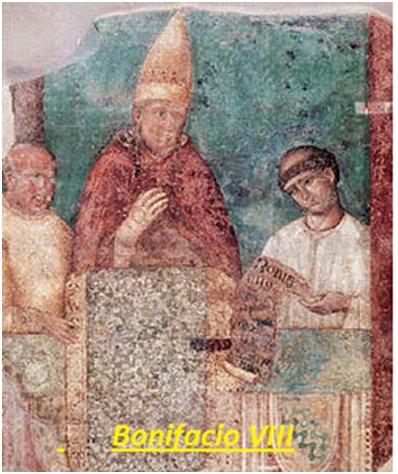 Pope Boniface VIII, Dante's enemy, who put him in Hell for a reason, remained famous for his corrupt customs and the "Anagni slap". He suffered from urinary retention, from which he died. Towards the end of 1200, it is said that he was in such bad shape "that all he had left were his tongue and eyes, because the rest of his body had putrefied".
Pope Boniface VIII, Dante's enemy, who put him in Hell for a reason, remained famous for his corrupt customs and the "Anagni slap". He suffered from urinary retention, from which he died. Towards the end of 1200, it is said that he was in such bad shape "that all he had left were his tongue and eyes, because the rest of his body had putrefied".
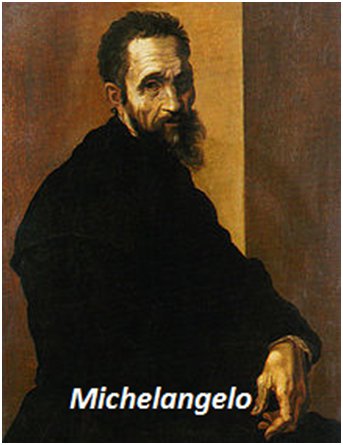 Michelangelo Buonarroti, was born in Rome on 6 March 1475. “Regarding my illness of not being able to urinate - he wrote - I was very sick and I moaned day and night without sleep and without any rest and for what the doctors judge, they say that I have stone sickness." Michelangelo had a famous doctor, the great anatomist Realdo Colombo who provided him with certainly effective treatments, as he wrote to his nephew on 23 March 1549: "I wrote to you about my pain from stone which is a very cruel thing. Then, having been given some water to drink, he made me throw in so much coarse, white porin with a few pieces of the rind of the stone that I improved a lot."
Michelangelo Buonarroti, was born in Rome on 6 March 1475. “Regarding my illness of not being able to urinate - he wrote - I was very sick and I moaned day and night without sleep and without any rest and for what the doctors judge, they say that I have stone sickness." Michelangelo had a famous doctor, the great anatomist Realdo Colombo who provided him with certainly effective treatments, as he wrote to his nephew on 23 March 1549: "I wrote to you about my pain from stone which is a very cruel thing. Then, having been given some water to drink, he made me throw in so much coarse, white porin with a few pieces of the rind of the stone that I improved a lot."
But as he grew older, his urinary difficulties became more and more serious, as can be seen from his latest writings.
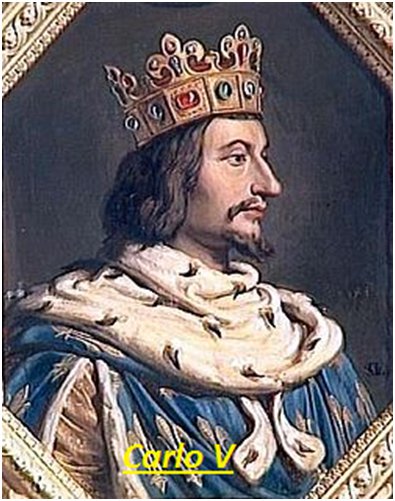 Charles V of Habsburg, born on 24 February 1500, suffered from prostatic hypertrophy. His illness had a curious side effect: sexual overexcitation, so much so that it was said that he never left the lady until after three successive "homages". During the German campaign he suffered cruelly from dysuria which, according to his doctor, Dr. Felipe, put him at risk of death every day(!). His doctor, to "macerate the fleshiness", introduced a candle into his urethra with a corrosive substance based on quicklime mixed with snail slime at the end. The candle was kept in situ for eight days and the operation was repeated the following month. To calm the atrocious pain that the candle caused, Doctor Felipe prescribed the king a liquid diet based on woman's milk or donkey's milk. However, Charles of Habsburg's urinary disorders were such as to force him to abdicate in favor of his son Philip in 1556.
Charles V of Habsburg, born on 24 February 1500, suffered from prostatic hypertrophy. His illness had a curious side effect: sexual overexcitation, so much so that it was said that he never left the lady until after three successive "homages". During the German campaign he suffered cruelly from dysuria which, according to his doctor, Dr. Felipe, put him at risk of death every day(!). His doctor, to "macerate the fleshiness", introduced a candle into his urethra with a corrosive substance based on quicklime mixed with snail slime at the end. The candle was kept in situ for eight days and the operation was repeated the following month. To calm the atrocious pain that the candle caused, Doctor Felipe prescribed the king a liquid diet based on woman's milk or donkey's milk. However, Charles of Habsburg's urinary disorders were such as to force him to abdicate in favor of his son Philip in 1556.
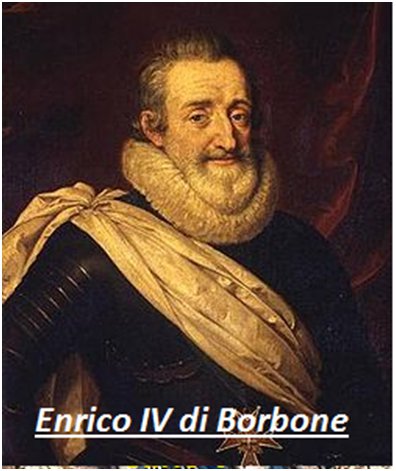 Henry IV of Bourbon, king of France since 1589, suffered from prostatic hypertrophy and urethral stricture and was also treated by his surgeon Loyseau with corrosive candles based on sabina grass. The treatment worked for a few years but then Dr. Torquet de Mayerne subjected him to a urethrotomy. The operation went well, but incredibly the surgeon, having used instruments for the operation which at the time were used only by barber-surgeons, and were therefore unworthy of a doctor, had to flee to England where he became the surgeon of James I.
Henry IV of Bourbon, king of France since 1589, suffered from prostatic hypertrophy and urethral stricture and was also treated by his surgeon Loyseau with corrosive candles based on sabina grass. The treatment worked for a few years but then Dr. Torquet de Mayerne subjected him to a urethrotomy. The operation went well, but incredibly the surgeon, having used instruments for the operation which at the time were used only by barber-surgeons, and were therefore unworthy of a doctor, had to flee to England where he became the surgeon of James I.
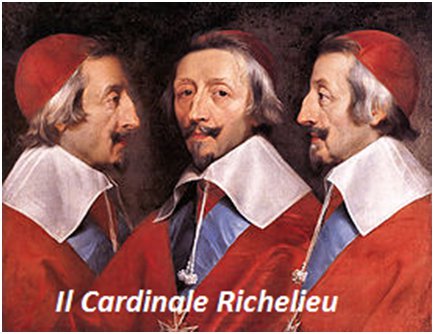 Cardinal Richelieu, born in 1585, became prime minister of the French King Louis XIII in April 1624. Despite the extraordinary power he had at his disposal, he could do nothing against the disorders caused by his prostatic hypertrophy. He frequently suffered from urinary retention and once did not urinate for 3 days in a row.
Cardinal Richelieu, born in 1585, became prime minister of the French King Louis XIII in April 1624. Despite the extraordinary power he had at his disposal, he could do nothing against the disorders caused by his prostatic hypertrophy. He frequently suffered from urinary retention and once did not urinate for 3 days in a row.
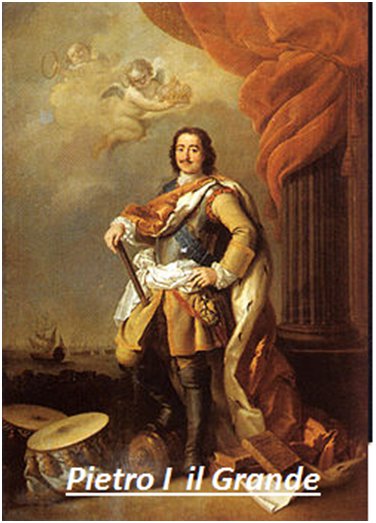 Peter I Romanov (the Great), Tsar of Russia since 1682, died at just 53 years of age from urinary retention of prostatic origin. Voltaire, however (also a prostatic patient), claimed that this retention was instead caused by a tumor in the neck of the bladder.
Peter I Romanov (the Great), Tsar of Russia since 1682, died at just 53 years of age from urinary retention of prostatic origin. Voltaire, however (also a prostatic patient), claimed that this retention was instead caused by a tumor in the neck of the bladder.
 Voltaire, the very famous Parisian writer, historian and ideologist, born in 1694, was also a great prostatitis. In the last years of his life he suffered from considerable difficulty urinating (stranguria), especially at night and took large doses of opiates to combat the pain. It is said that in the year of his death, which occurred in 1778, the man of letters was so annihilated by opium that he drank urine from his chamberpot at night to quench his thirst.
Voltaire, the very famous Parisian writer, historian and ideologist, born in 1694, was also a great prostatitis. In the last years of his life he suffered from considerable difficulty urinating (stranguria), especially at night and took large doses of opiates to combat the pain. It is said that in the year of his death, which occurred in 1778, the man of letters was so annihilated by opium that he drank urine from his chamberpot at night to quench his thirst.
At autopsy his bladder was found to be "purulent, ulcerated and with thickened walls. His prostate was greatly enlarged."
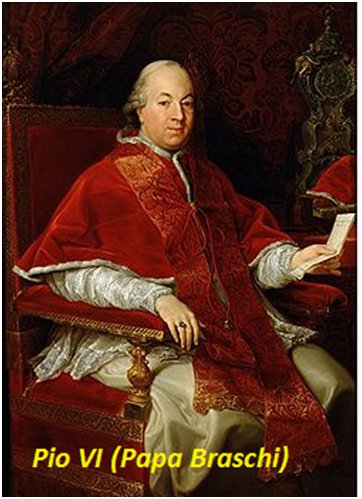 Pius VI (Pope Braschi), born in 1717, was imprisoned by Napoleon I after the proclamation of the Roman Republic in 1789 and was deported to France. In the last years of his life, he suffered from benign prostatic hypertrophy and was subjected to frequent and very painful urethral catheterizations
Pius VI (Pope Braschi), born in 1717, was imprisoned by Napoleon I after the proclamation of the Roman Republic in 1789 and was deported to France. In the last years of his life, he suffered from benign prostatic hypertrophy and was subjected to frequent and very painful urethral catheterizations
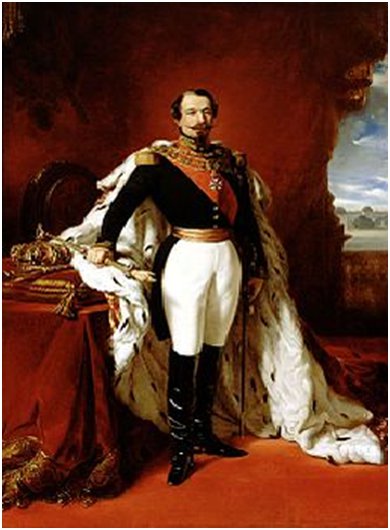 For Napoleon III, prostatic hypertrophy had tragic repercussions for the fate of France. As early as 1853 he had been experiencing bladder pain which he attributed to long rides. But as time went by, the pain progressively worsened because in addition to prostatic hypertrophy, Napoleon also suffered from bladder stones, a consequence of retention.
For Napoleon III, prostatic hypertrophy had tragic repercussions for the fate of France. As early as 1853 he had been experiencing bladder pain which he attributed to long rides. But as time went by, the pain progressively worsened because in addition to prostatic hypertrophy, Napoleon also suffered from bladder stones, a consequence of retention.
Although his doctors recommended the operation, the Emperor, for fear of dying, always refused it. To try to soothe the pain caused both by urinary retention, but above all by bladder stones and the continuous infections connected to it, Napoleon began to resort to opiates.
History tells us that already from the beginning of 1870 most of the day he was no longer lucid enough to govern. The prof. Sèe, summoned for consultation, said he had found the Emperor "moaning with bottles filled with dirty and bloody urine around his armchair; more and more prostrate day by day, he put the last remnants of his will not to feel too sorry for himself."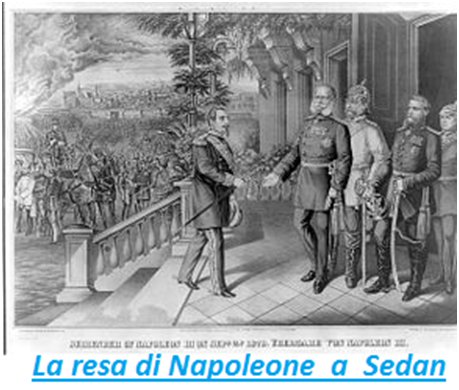 However, in July 1870 he decided to start the war against Prussia and left on horseback to personally direct the operations. But he miscalculated the real power of the opposing army and on 2 September 1870, at the head of 120,000 men he was surrounded in Sedan by 220,000 men of the Prussian army. He surrendered, but not because of the enemy preponderance but because of the pain! He went to personally surrender to William II, Emperor of Prussia, by being transported in a carriage.
However, in July 1870 he decided to start the war against Prussia and left on horseback to personally direct the operations. But he miscalculated the real power of the opposing army and on 2 September 1870, at the head of 120,000 men he was surrounded in Sedan by 220,000 men of the Prussian army. He surrendered, but not because of the enemy preponderance but because of the pain! He went to personally surrender to William II, Emperor of Prussia, by being transported in a carriage.
 He was now exhausted and had to be catheterized at least twice a day and lived swabbed with towels soaked in urine, blood and pus and was too numb from opium to stay on horseback to direct the battle.
He was now exhausted and had to be catheterized at least twice a day and lived swabbed with towels soaked in urine, blood and pus and was too numb from opium to stay on horseback to direct the battle.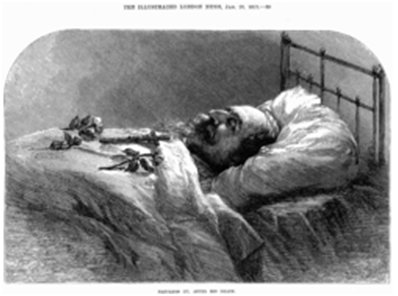 He was sent into exile in England, where his symptoms worsened. In the end the operation no longer appeared to be postponable. Thus, preliminarily, on the day after Christmas 1872, the patient was subjected to anesthesia by Dr. Joseph Clover, “the most expert chloroformist of the moment”. The survey confirmed the presence of a stone "as big as a pigeon's egg", and lithotripsy surgery was immediately planned. The patient returned to his residence temporarily, only to be operated on on January 2, 1873.
He was sent into exile in England, where his symptoms worsened. In the end the operation no longer appeared to be postponable. Thus, preliminarily, on the day after Christmas 1872, the patient was subjected to anesthesia by Dr. Joseph Clover, “the most expert chloroformist of the moment”. The survey confirmed the presence of a stone "as big as a pigeon's egg", and lithotripsy surgery was immediately planned. The patient returned to his residence temporarily, only to be operated on on January 2, 1873.
The operation was performed by the very famous prof. Thompson, who extracted the first part of the large calculation. But after 7 days, when preparations were being made for a second operation, the august patient died.
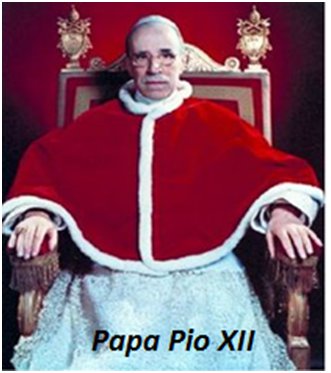 Pope Pius XII suffered from prostatic hypertrophy but believed more in homeopathy than in official medicine. Therefore his doctor, the Papal Architect Prof. Galeazzi-Lisi, to satisfy him, subjected him to the strangest treatments he himself invented (the famous biogenetic diet). Despite this, the Pope kept getting worse (obviously!) and in the end the Archiatrist was forced, to treat the august patient, to call two real doctors, who he
Pope Pius XII suffered from prostatic hypertrophy but believed more in homeopathy than in official medicine. Therefore his doctor, the Papal Architect Prof. Galeazzi-Lisi, to satisfy him, subjected him to the strangest treatments he himself invented (the famous biogenetic diet). Despite this, the Pope kept getting worse (obviously!) and in the end the Archiatrist was forced, to treat the august patient, to call two real doctors, who he
himself chose on the basis of "a certain monarchical faith" (sic!)
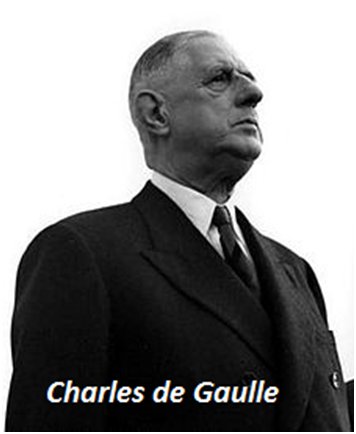 Charles de Gaulle, the famous French general, later President of the Fifth French Republic, was born in 1890. He suffered from prostatic hypertrophy, but despite repeated medical treatments, the pain was so intense that surgery was recommended. We are in March 1964 and the president had to go to Mexico for a very important diplomatic mission. He absolutely didn't have time to operate and so his doctor advised him to place an indwelling catheter to temporarily solve the problem. However, when he learned that this catheter (the Foley) was of American invention, he was convinced that he was anti-American and did not want to have it inserted until he was assured that it had been built in France. The matter then remained a state secret!
Charles de Gaulle, the famous French general, later President of the Fifth French Republic, was born in 1890. He suffered from prostatic hypertrophy, but despite repeated medical treatments, the pain was so intense that surgery was recommended. We are in March 1964 and the president had to go to Mexico for a very important diplomatic mission. He absolutely didn't have time to operate and so his doctor advised him to place an indwelling catheter to temporarily solve the problem. However, when he learned that this catheter (the Foley) was of American invention, he was convinced that he was anti-American and did not want to have it inserted until he was assured that it had been built in France. The matter then remained a state secret!
De Gaulle was then happily operated on with a suprapubic prostatectomy by his urologist Prof. Aboulker in April of the same year.
 Ronald Reagan was the 40th President of the United States from 1981 to 1989. In August 1986 his prostate was so enlarged that surgery was required without further delay. The most highly specialized team that could be found in the USA was recruited. Witnesses say that the operating room “was as crowded as the New York subway. during rush hour." The surgeons masterfully removed the President's prostate, transurethrally, with the technique commonly used today (TURP, see videos).
Ronald Reagan was the 40th President of the United States from 1981 to 1989. In August 1986 his prostate was so enlarged that surgery was required without further delay. The most highly specialized team that could be found in the USA was recruited. Witnesses say that the operating room “was as crowded as the New York subway. during rush hour." The surgeons masterfully removed the President's prostate, transurethrally, with the technique commonly used today (TURP, see videos).

